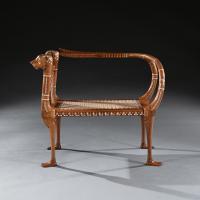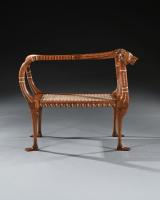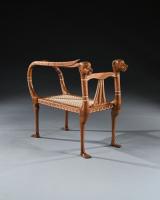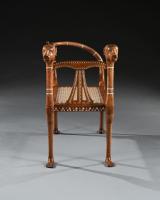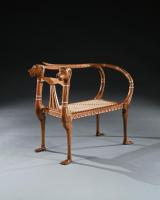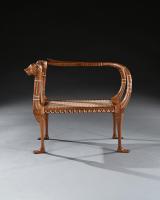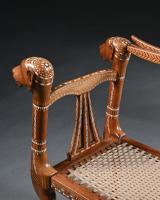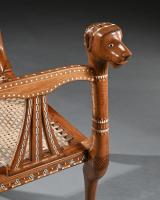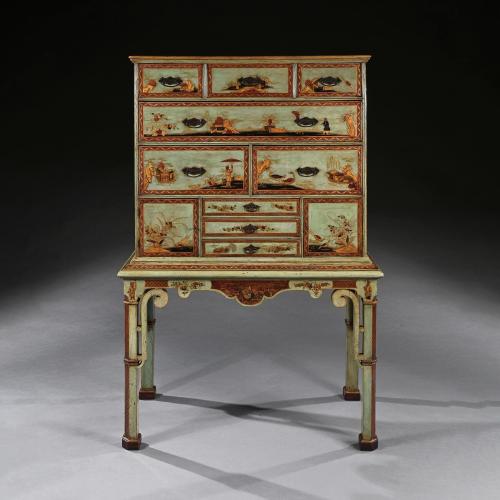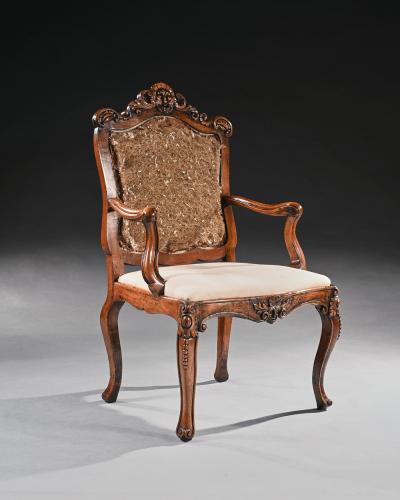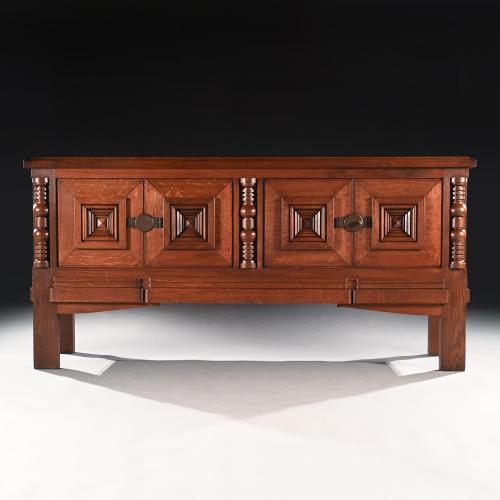
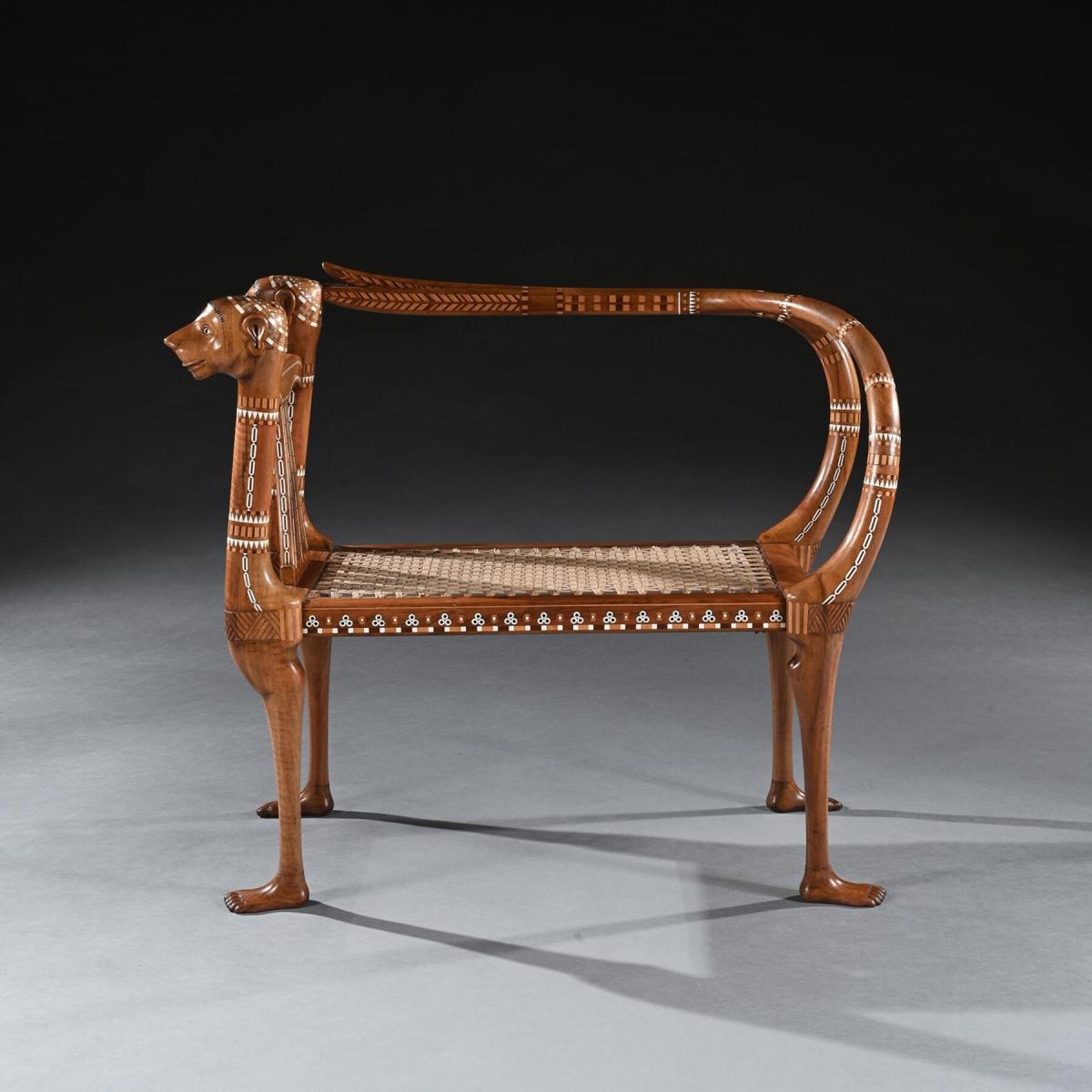
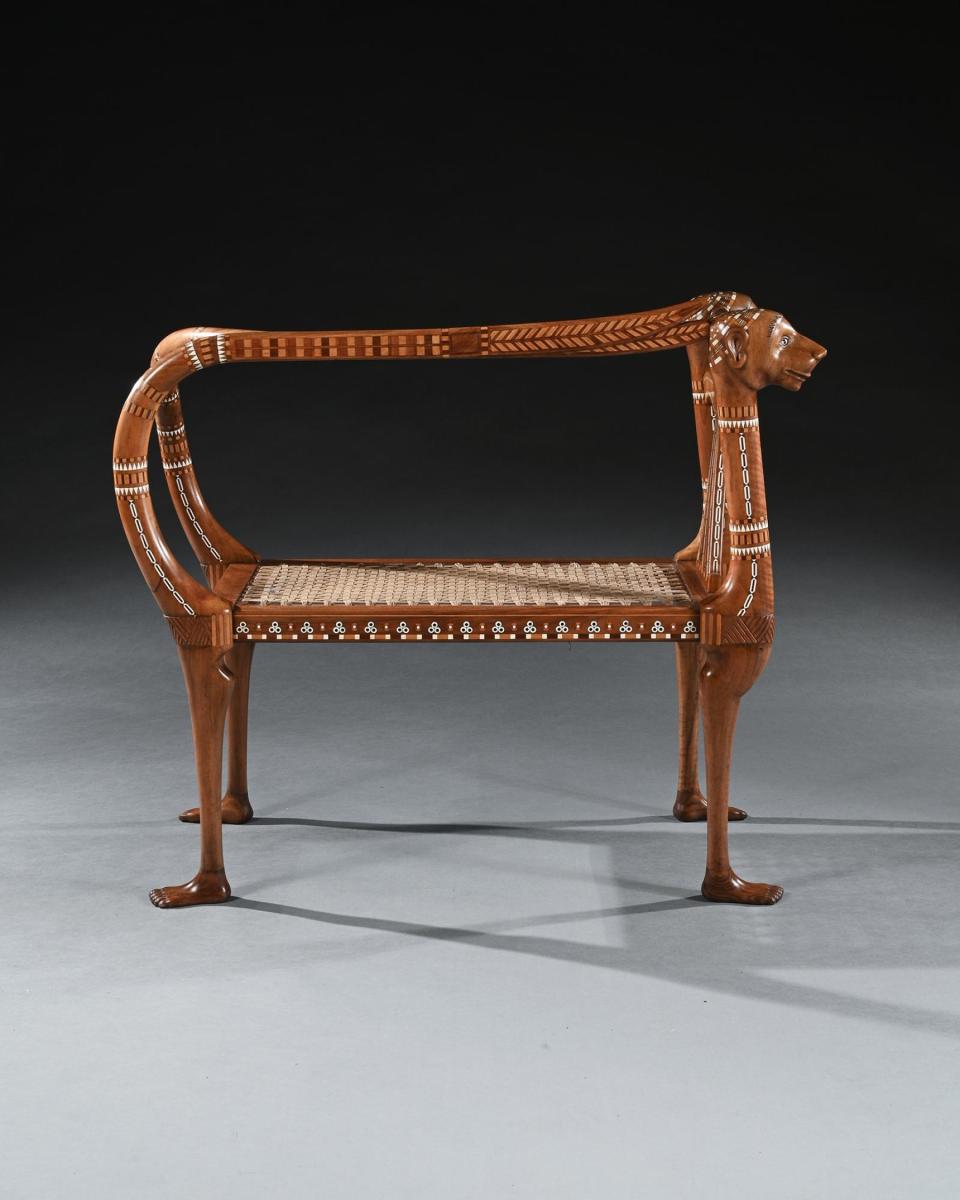
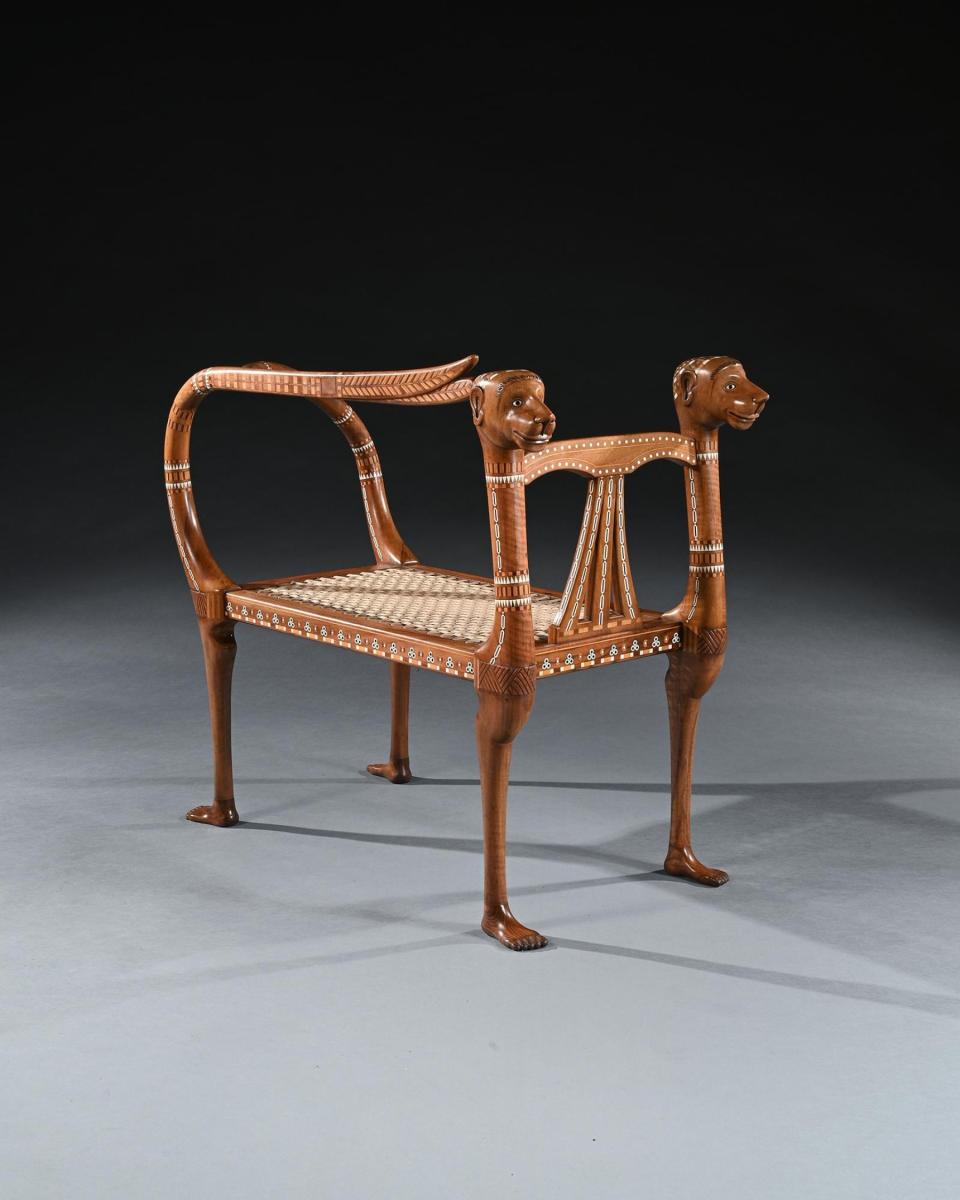
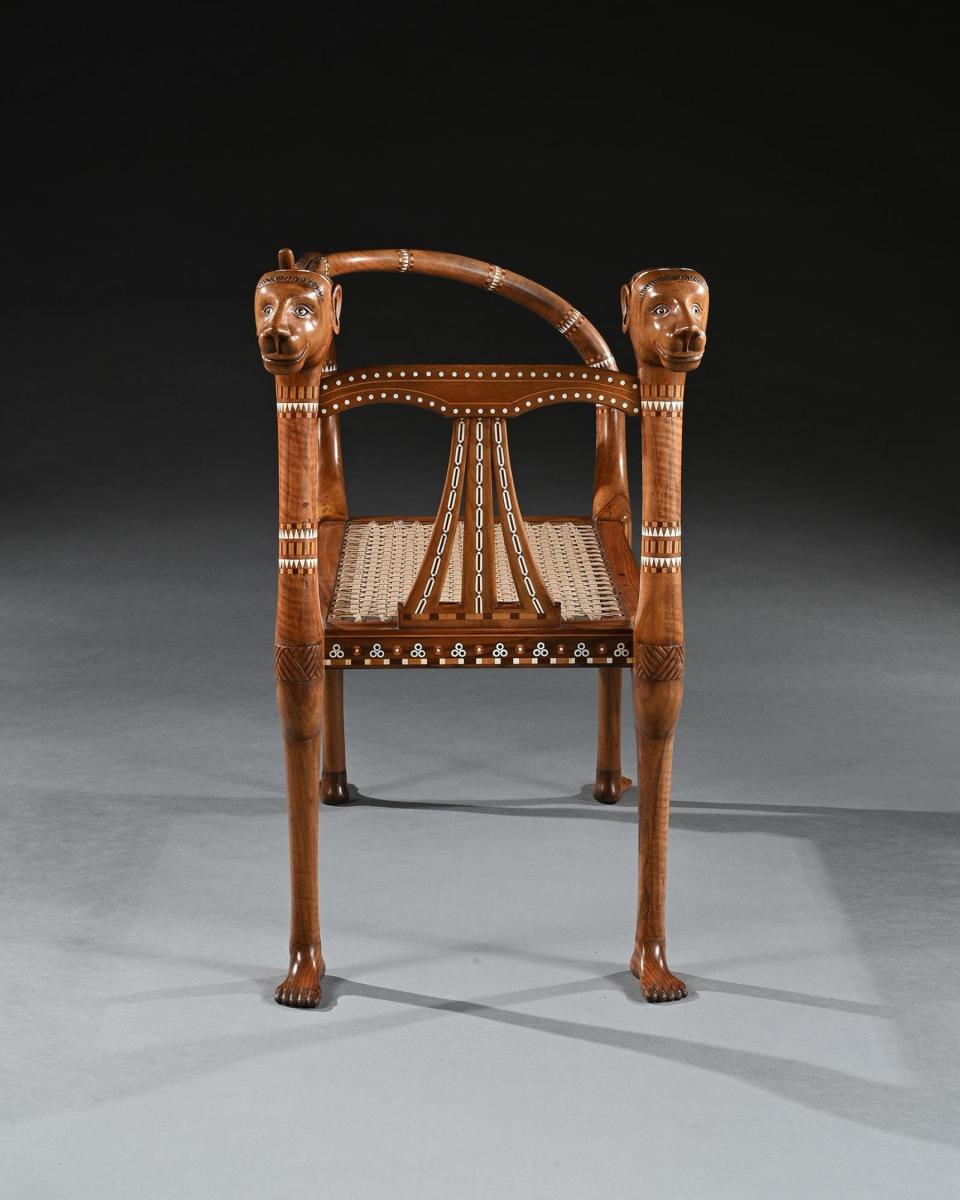
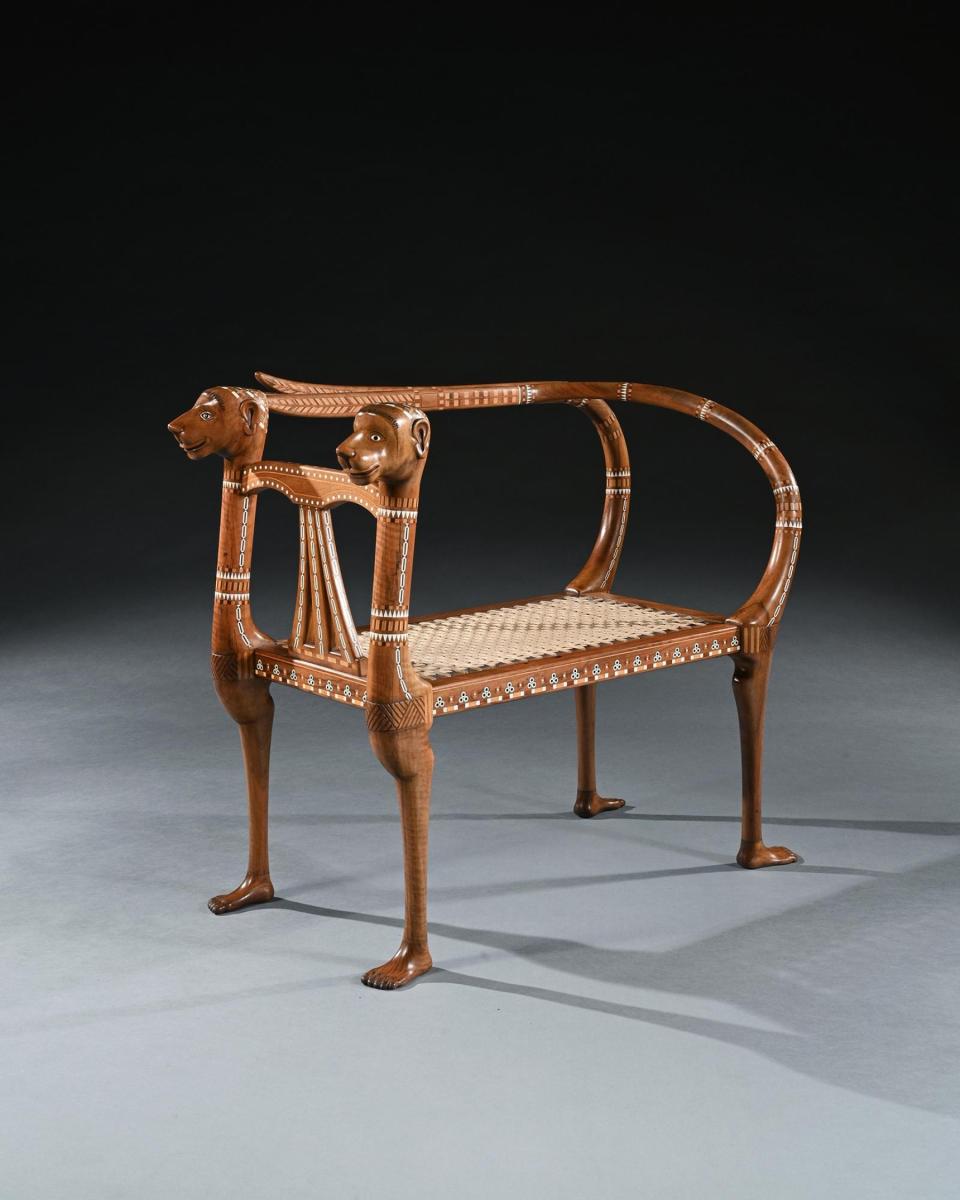
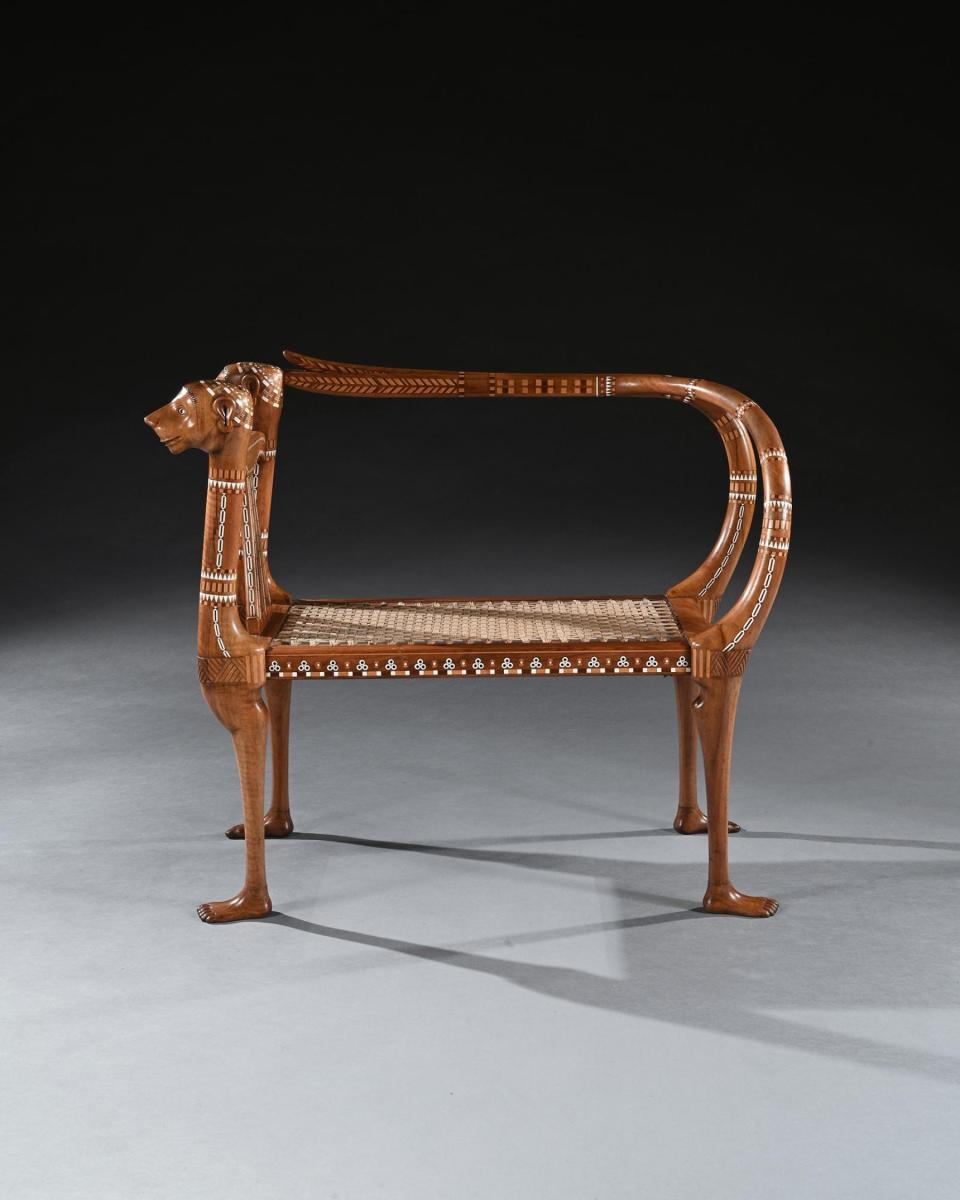
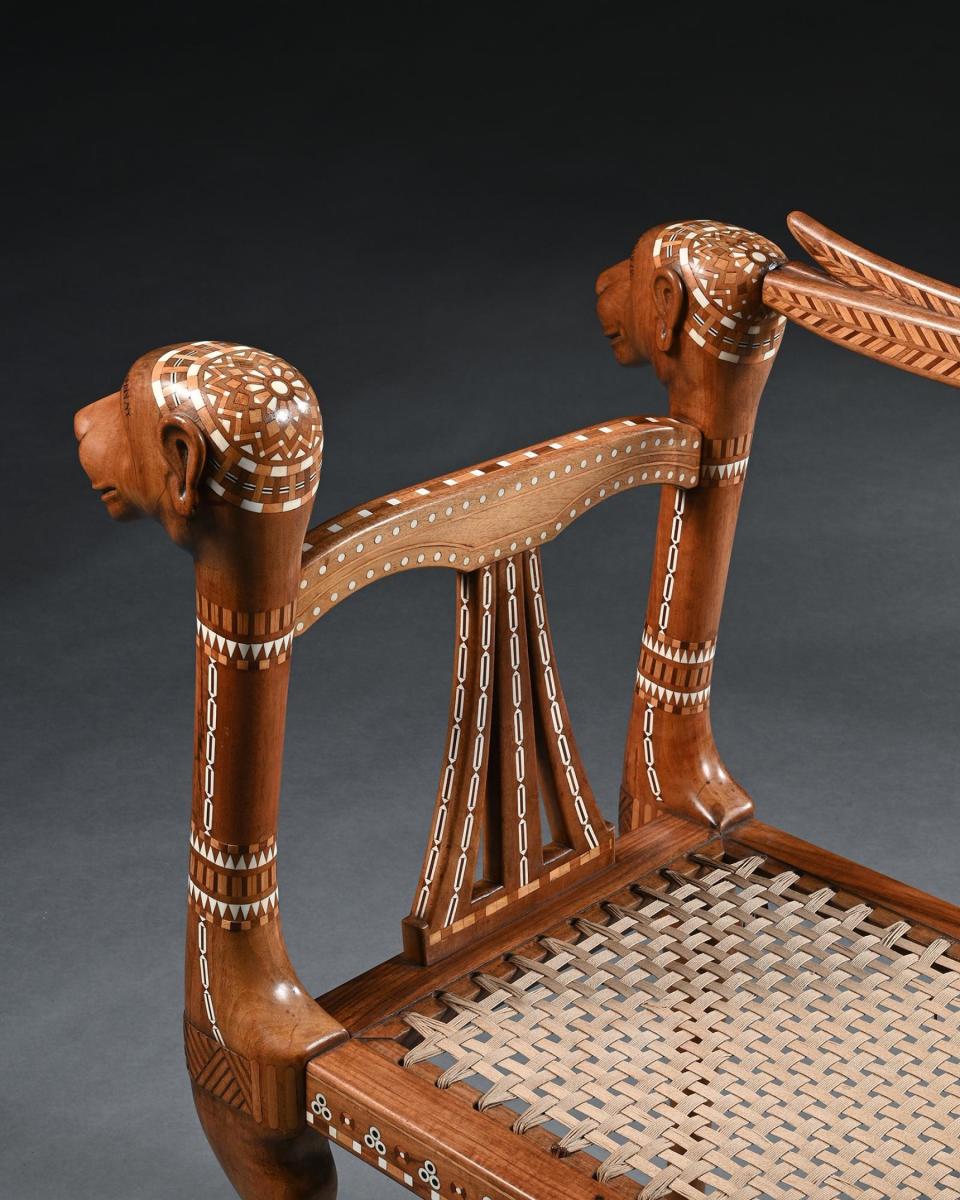
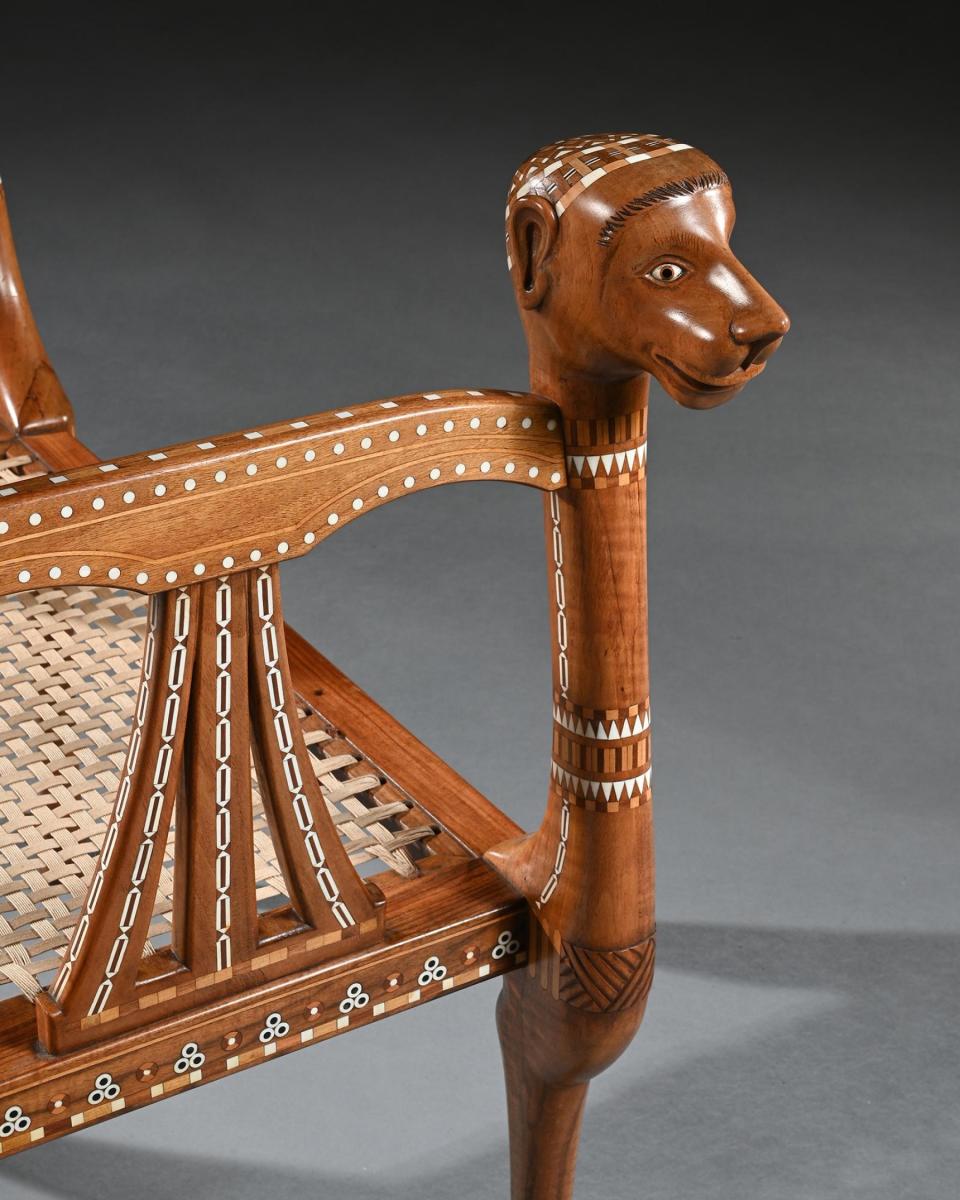

Price
£19500.00This object includes complimentary, Insured Shipping / Delivery within the UK
This object is eligible for a Certificate of BADA Provenance
The BADA Standard
- Since 1918, BADA has been the leading association for the antiques and fine art trade
- Members are elected for their knowledge, integrity and quality of stock
- Our clients are protected by BADA’s code of conduct
- Our dealers’ membership is reviewed and renewed annually
- Bada.org is a non-profit site: clients deal directly with members and they pay no hidden fees
Exhibition Quality Egyptian Revival Walnut and Inlaid Bench or Window Seat.
An Extremely Rare and Possibly Unique Walnut and Inlaid Egyptian Revival Bench or Window Seat
French Circa - 1922-25
Of exhibition quality, made from solid walnut and profusely inlaid with geometric tesserae including bone and ivory, along with ebony, purplewood and fruitwood. One end comprising of dual monopodiae supports with carved mythical animal masks and a dividing pierced splat, the rectangular framed woven seat with dual raised tails to the opposing short side that are joined at their ends above the long rear side, the conforming legs with carved human feet.
The stylised heads do not seem to resemble any one particular animal or Egyptian god-they have elements that might suggest they are panthers, others that suggest the dog god Anubis, and in all likelihood they were simply meant to have been seen as fantastical representations of mythical beings.
The heads are yoked together with something approaching a more conventional chair splat with the heads, rails, tails and splat are all inlaid with a combination of exotic woods including ebony, purpleheart and fruitwoods as well as ivory and bone in the ancient Egyptian taste. This sort of profuse inlay is common on the best Art Deco furniture but, of course, the use of Egyptian motifs is much more unusual.
A date of circa 1922 is highly likely to be accurate as it was in this year that a craze for Egyptomania seized the world due to the discovery of Tutankhamun's tomb by Harold Carter and his team in the Valley of the Kings. We have included an image of the antechamber in the tomb showing furniture stacked up in piles and it is possible to see part of two of the benches of related form which must have inspired the present piece. The furniture in the tomb was gilded and/or painted and not inlaid so the maker of our piece clearly decided to take the most time-consuming route possible when producing this bench and no expense was spared. Whereas items such as Egyptian revival jewels by Cartier and the like survive in reasonable numbers, pieces of furniture in this taste are extremely rare.
The delicacy of the work and the design of this extraordinary piece of furniture suggests that it was probably made by a leading French workshop of the period. Related articles have been sold a few times over the years but none have quite the delicacy of the present piece and the particularly refined inlay work on a walnut base, most of these pieces utilising woods such as cedar instead.
A pair of stools in the form of lions which bear comparison with the present piece are illustrated in B.M. Newman, Fantasy Furniture, 1989, New York, p. 34.
Ever since the first European explorers visited Egypt the country and its iconography have been a source of great interest to European connoisseurs and those who execute designs for the decorative arts. Vivant Denon's evocative drawings of Egypt and its antiquities, produced whilst on campaign with Napoleon in 1798-1801 caused a sensation and inspired the work of designers in England such as Thomas Hope and George Smith and the construction of buildings such as William Bullock's Egyptian Museum in London. However when tombs in Egypt began to be systematically excavated in the 20th century and some of the incredible treasures they contained were photographed and shown in newspapers worldwide a whole new mania was created. The discovery of Tutankhamun's tomb and its largely untouched contents in remarkable condition gripped the world and visits to see the treasures in Cairo or on one of their increasingly rare international exhibition tours are the only ways that most people today can experience these incredible objects. This bench is a rare example of a furniture maker bringing the past up to date fusing the latest styles and techniques with a truly ancient taste making this bench is a real conversation piece.
The item within this lot containing ivory has been registered in accordance with the Ivory Act (Section 10). Ref GJU8Q83
Width: 41 1/4 inches - 105cm.
Height: 36 1/2 inches - 92cm.
Depth: 21 1/2 inches - 55cm.
This object incorporates old ivory and has been registered with Defra
Dimensions
Width: 41 1/4 inches - 105cm Height: 36 1/2 inches - 92cm Depth: 21 1/2 inches - 55cmPrice
£19500.00This object includes complimentary, Insured Shipping / Delivery within the UK
This object is eligible for a Certificate of BADA Provenance
The BADA Standard
- Since 1918, BADA has been the leading association for the antiques and fine art trade
- Members are elected for their knowledge, integrity and quality of stock
- Our clients are protected by BADA’s code of conduct
- Our dealers’ membership is reviewed and renewed annually
- Bada.org is a non-profit site: clients deal directly with members and they pay no hidden fees


